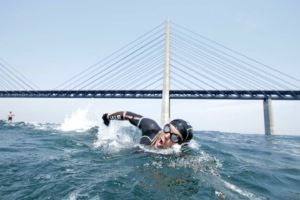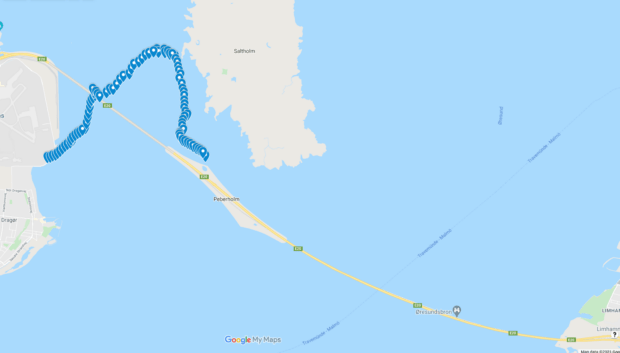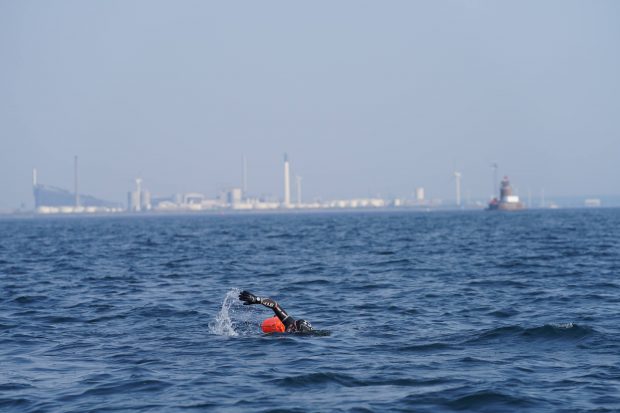News
Rip tide: Bridge too far for British ultra endurance athlete
This article is more than 4 years old.
Local copywriter Rip Davenport fails in his bid to swim the Øresund Bridge, but he will return …

Ripping it up (photo: Bill Watts: Bill of Sweden)
Ultra endurance athlete Rip Davenport, a British copywriter based in Malmö and Copenhagen, failed in his bid to swim across the Øresund Strait from Denmark to Sweden on June 19 alongside the imposing figure of the Øresund Bridge.
The swim is an estimated 15.35 km and Davenport, 51, had hoped to become the first person to swim the proposed route.
“Being dwarfed by a magnificent engineering structure, this will be one of the scariest and most thrilling locations I have ever swam in,” he said beforehand.
“It’s not about being the first, swimming the furthest or the fastest. It’s quite simply just a swim, a personal challenge.”
Current too strong
Sadly though, his bid came to an end after five hours, during which time he had swum three-fifths of the distance but only managed to cover one-third of the proposed course (see below).
A strong current made it almost impossible to advance, and Davenport felt it wise to concede and plan to swim it on a more favourable day sometime in the near future.
“I barely made Peberholm due to the unrelenting currents,” Davenport told CPH POST.
“At 9km, I should have been well over halfway: on the home straight with Sweden in my sights. But currents change and no marine forecast or archive of tides will tell you how it’s going to be like. I blew the whistle on this challenge rather than continue swimming past exhaustion, hypothermia and pain.”

Not his first rodeo
Davenport, a former rescue swimmer and medical first responder, has completed multiple triathlons, long distance swims (10km+), swim/run events and ultra races including IRONMAN full distance triathlons.
In 2015, he became the first person to swim the length of the Kenmare River in the Republic of Ireland (42km). He even walked across the Gobi desert twice.
Aside from a few small chaff marks on his neck, he was back in training the next day.
“Success comes from trying again. Ultimately, you can never fail if you never give up. Will I do the swim again? Of course, and very soon, but I will prepare for it differently, with more humility and stronger focus,” vowed Davenport.











































